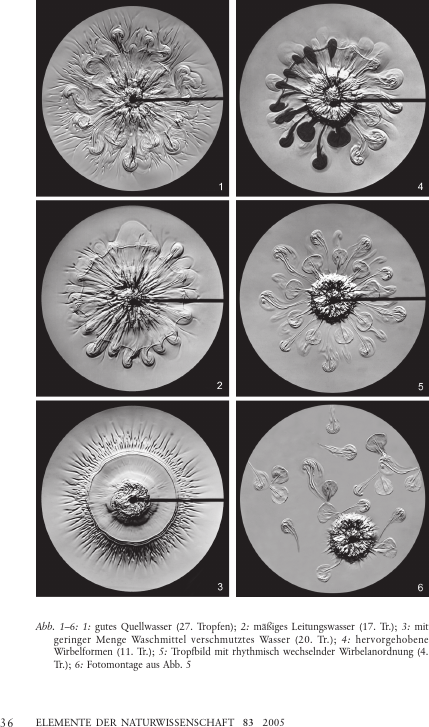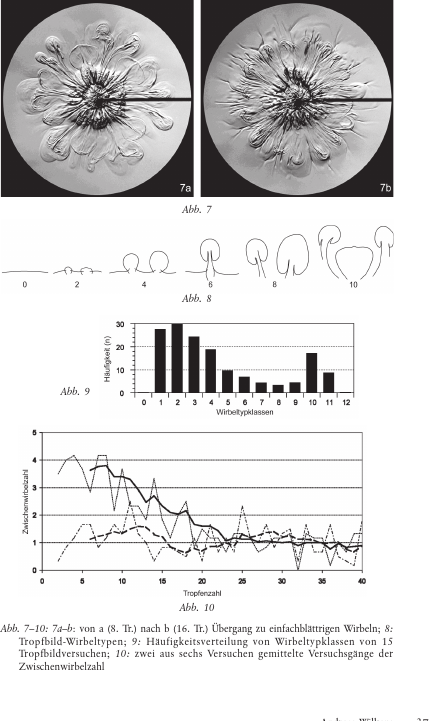Betrachtungsebenen - von der Morphologie der Tropfbilder bis zum Lebenszusammenhang
Export Article Citation as
- Plain text
- BibTeX
- RIS format
- Download price : € 6.00
Abstract:
In Theodor Schwenk’s drop-picture method, drops of distilled water are allowed to fall repeatedly on a thin film of a water sample. This causes currents to form whose pattern is made visible by the addition of glycerine to the sample and the use of Schlieren optics. The resulting pictures vary in character according to the composition of the water sample and convey impressions that can be associated with its properties.
After an initial often still subjective pictorial impression, the process of enquiry turns to the details of the picture and leads to its wholeness at a higher, objective level. As easy is the step into the details, as difficult is the step back to the whole.
Knowledge of the connection between the picture and the nature of the sample is restricted to the level at which the picture is being considered. If it is considered just as a picture, only pictorial aspects can be characterised. But if the flow movements that give rise to the picture are considered, then the picture’s forms can become an expression of movements. In this sense the method also takes into consideration the various levels of experimental conditions, substances, type of water and the context of life.
What is here presented for the drop-picture method can in principle be relevant to work with other picture forming methods.





